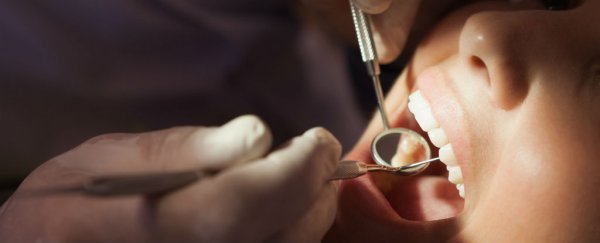Researchers in Brazil have developed a new anaesthetic technique that could save you from an injection the next time you visit the dentist's surgery. The procedure uses a small, painless electric current to augment a local painkiller (in the form of a hydrogel, ointment, or spray), and the team has described the results as fast-acting and long-lasting in animal trials.
This local painkiller (usually a gel containing lidocaine and prilocaine) is often used to numb the pain of the needle, but the team from University of São Paulo wanted to investigate if it could be enhanced to remove the need for a needle and an extra anaesthetic altogether. Via the process of iontophoresis, where an electric field causes a diffusive flow of ions, they were able to increase the effectiveness of the local anaesthetic in the mouth of a pig.
Not only could it encourage people who are put off by needles to revisit their dentist, the new procedure might ultimately save us money while reducing the risk of contamination and infection, say the researchers. "Needle-free administration could save costs, improve patient compliance, facilitate application and decrease the risks of intoxication and contamination," said study author Renata Fonseca Vianna Lopez. "This may facilitate access to more effective and safe dental treatments for thousands of people around the world."
The first step was to add a polymer to the anaesthetic hydrogel to keep it firmly stuck to the lining of the mouth. Then two additional anaesthetics, prilocaine hydrochloride (PCL) and lidocaine hydrochloride (LCL), were applied before the electrical current. The result was an anaesthetic that's fast-acting and long-lasting, with a reported 12-fold increase in the permeation of the anaesthetic through the mouth.
The research team's work has been published in the journal Colloids and Surfaces B: Biointerfaces.
The next step is to work towards preclinical trials to test the technology out on humans. Other areas of medicine, such as cancer treatments, may also benefit from the technology.
"Over the last few years, our research group has been working on the development of novel drug delivery systems for the treatment of several skin and eye diseases," says Lopez. "The skin and eyes pose challenges for drug delivery, so we have focused on improving drug delivery in these organs using nanotechnology, iontophoresis and sonophoresis, which is permeation using sound waves."
Using electrical currents to aid dentistry practices isn't completely new: back in 2014, researchers at King's College, London in the UK developed a type of painless electrical current that was able to promote the return of calcium, phosphate, and other substances back into the enamel of the tooth in question. Commercial funding for the technique is still in the process of being raised.
